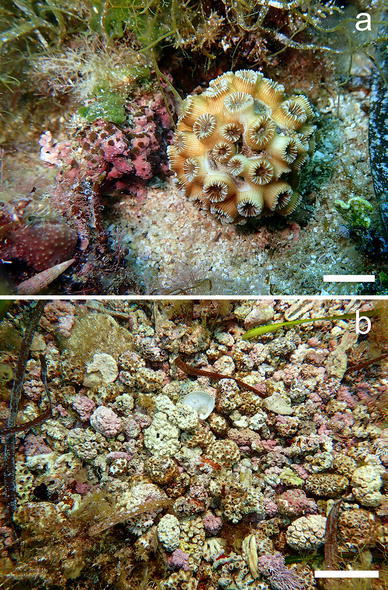Rolling corals in the Mediterranean Sea
News vom 30.11.2016
D. K. Kersting, E. Cebrian, J. Verdura, E. Ballesteros
Whole article: [Reef Site, Kersting, D.K., Cebrian, E., Verdura, J. et al. Coral Reefs (2016).]
First Online: 20 September 2016; DOI: 10.1007/s00338-016-1498-9
Nodular morphology is typical of free-living coralline algae, which form extensive rhodolith beds worldwide. However, under certain environmental conditions, coral colonies may also be able to live unattached to the substratum, acquiring a characteristic spherical morphology. These free-living coral colonies are generally called coralliths.
In this Reef Site the authors report on their recent discovery of high abundances of Cladocora caespitosa coralliths in S'Espardelló islet (Formentera, Balearic Islands, Mediterranean Sea). In this site C. caespitosa colonies occur among dense algae forests and the authors hypothesize that the unusual coralith morphology may be the result of periodical wave-induced turnover of small coral fragments inside the forest. This is the first report on the occurrence of this rare coral morphology type in the Mediterranean Sea.

a Coral nodule or corallith (Cladocora caespitosa). Scale bar 1 cm.
b Mixed accumulation of coral and coralline algae nodules in a rocky depression. Scale bar 10 cm